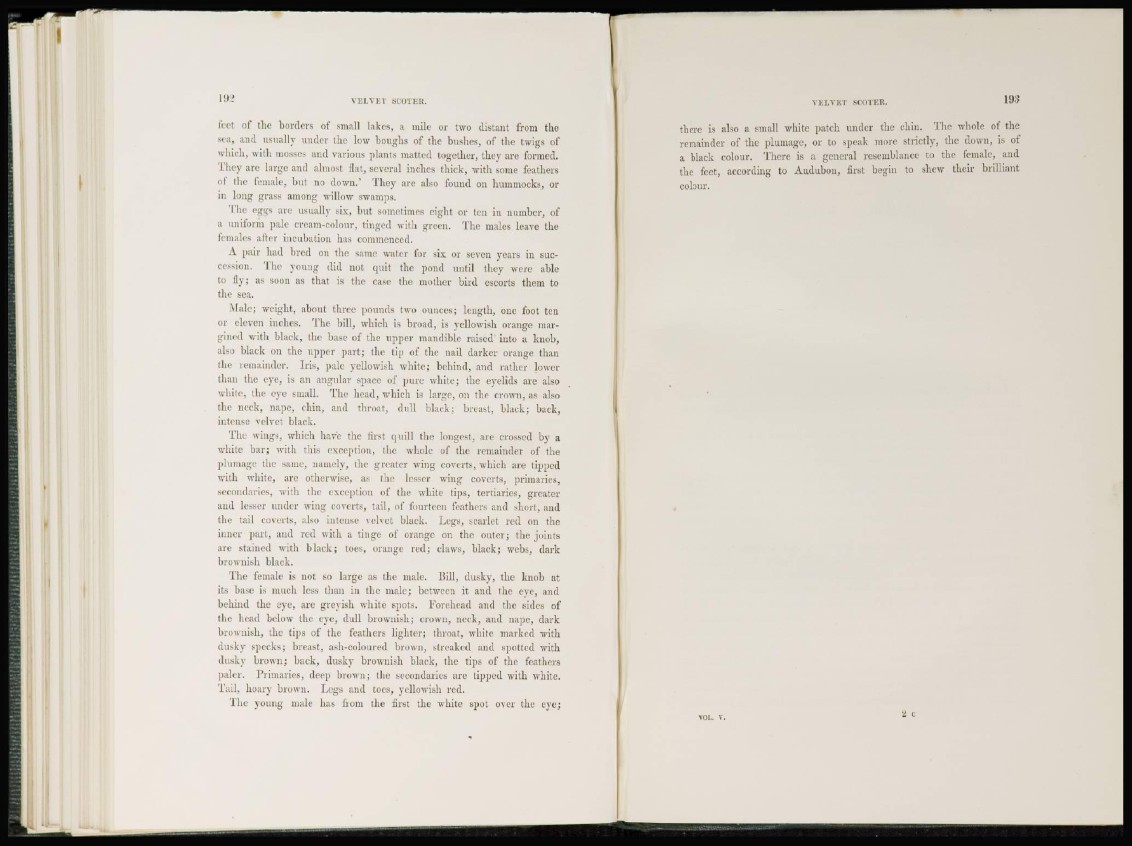
feet of the borders of small lakes, ¡1 mile or two distant from the
s e a , and usually under the low boughs of the bushes, of the twigs of
which, with mosses and various plants matted together, they are formed.
They are large and almost flat, several inches thick, with some feathers
id' the female, but no down.' They arc also found on hummocks, or
i n long grass among willow swamps.
The eggs are usually six, but sometimes eight or ten in number, of
a uniform pale cream-colour, tinged with green. The males leave the
females after incubation has commenced.
A pair had bred on the same water for six or seven years in succession.
The young did not quit the pond until they were able
to fly; as soon as that is the case the mother bird escorts them to
the sea.
Male: weight, about three pounds two ounces; length, one foot ten
or eleven inches. The bill, which is broad, is yellowish orange margined
with black, the base of the upper mandible raised into a knob,
also black on the; upper part; the tip of the nail darker orange than
the remainder. Tris, pale yellowish wdiite; behind, and rather lower
than the eye, is an angular space of pure white; the eyelids are also
white, the eye small. The head, which is large, on the crown, as also
the neck, nape, chin, and throat, dull black; breast, black; back,
intense velvet black.
The wings, which have the first quill the longest, arc crossed by a
wdiite bar; with this exception, the whole of the remainder of the
plumage the same, namely, the greater wing coverts, which are tipped
with white, are otherwise, as the lesser wing coverts, primaries,
secondaries, with the exception of the white tips, tertiaries, greater
and lesser under wing coverts, tail, of fourteen feathers and short, and
the tail coverts, also intense velvet black. Legs, scarlet red on the
inner part, ami red with a tinge of orange on the outer; the joints
are stained with black; toes, orange red; claws, black; webs, dark
brownish black.
'The female is not so large as the male. Bill, dusky, the knob at
its base is much less than in the male; between it and the eye, and
behind the eye, are greyish white spots. Forehead and the sides of
the head below the eye, dull brownish; crown, neck, and nape, dark
brownish, the tips of the feathers lighter; throat, wdiite marked with
dusky specks; breast, ash-coloured brown, streaked and spotted with
dusky brown; back, dusky brownish black, the tips of the feathers
paler. Primaries, deep brown; the secondaries are tipped with white.
T a i l , hoary brown. Legs and toes, yellowish red.
The young male has from the first the white spot over the eye;
there is also a small white patch under the chin. The wdiole of the
remainder of the plumage, or to speak more strictly, the down, is of
a black colour. There is a general resemblance to the female, and
the feet, according to Audubon, first begin to shew their brilliant
colour.
VOL. V.